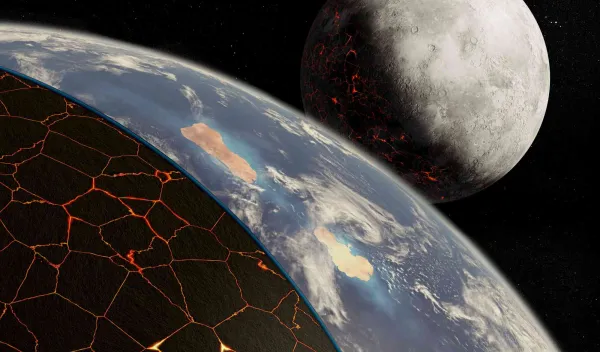
Plate tectonics not required for the emergence of life
Scientists have taken a journey back in time to unlock the mysteries of Earth's early history using tiny mineral crystals called zircons to study plate tectonics billions of years ago. The research sheds light on the conditions that existed in early Earth, revealing a complex interplay between Earth's crust, core and the emergence of life.
Plate tectonics allows heat from Earth's interior to escape to the surface, forming continents and other geological features necessary for life to emerge. Accordingly, "there has been the assumption that plate tectonics is necessary for life," says John Tarduno of the University of Rochester. But new research casts doubt on that assumption.
Tarduno is lead author of a U.S. National Science Foundation-supported paper published in Nature examining plate tectonics from a time 3.9 billion years ago, when scientists believe the first traces of life appeared on Earth. The researchers found that mobile plate tectonics was not occurring during this time.
“We think plate tectonics, in the long run, is important for removing heat, generating the magnetic field and keeping things habitable on our planet”
- Tarduno
"This study demonstrates that modern geological methods are important for us to understand the history of Earth's plate tectonics, the effect on how life began on this planet and how we can broaden our search for life on other planets," says Eva Zanzerkia, a program director in NSF's Division of Earth Sciences.
The geoscientists discovered that Earth was releasing heat through what is known as a stagnant lid regime. The results indicate that although plate tectonics is a key factor for sustaining life on Earth, it is not a requirement for life to originate on a terrestrial-like planet.
"We found there wasn't plate tectonics when life is first thought to originate and that there wasn't plate tectonics for hundreds of millions of years after," says Tarduno. "Our data suggests that when we're looking for exoplanets that harbor life, the planets do not necessarily need to have plate tectonics."
Venus is not a very nice place to live. It has a crushing carbon dioxide atmosphere and sulfuric acid clouds, according to Tarduno, because heat is not being removed effectively from the planet's surface.
Without plate tectonics, Earth may have met a similar fate. While the researchers hint that plate tectonics may have started on Earth soon after 3.4 billion years, geologists are divided on a specific date.
“We think plate tectonics, in the long run, is important for removing heat, generating the magnetic field and keeping things habitable on our planet,” Tarduno says. "But, in the beginning, and for a billion years afterward, our data indicates that we didn't need plate tectonics."
